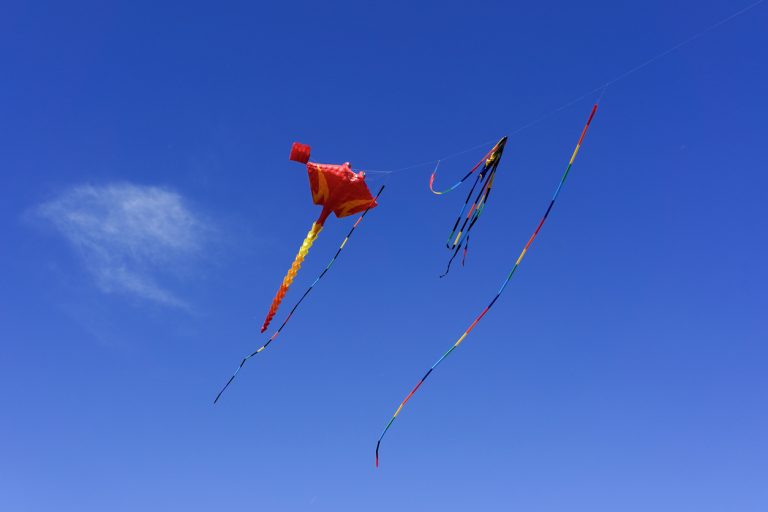5 Ways To Help Your Fly Your Kite
Flying a kite brings out the child in everyone, and it’s not just the kite-flying itself but also the bonding moments with family and friends—not to mention the thrill and adrenaline of seeing your kite conquering greater winds and heights. There is much to say about kite flying, but the bottom line here is that kite flying is a rewarding experience.
To make your kite flying experiences more rewarding, you need to consider the following 5 ways to help your kite fly:
- Pick the best kite
- Check the weather and wind forecast
- Know how to fly a kite
- Analyze the issues of why a kite is not flying
- Follow the safety tips
While it’s true that flying a kite is a rewarding experience, you still need to make sure that it is a fulfilling one. That’s why you should make considerations accordingly. It is because kite flying may be a rewarding memory, but how do we make it memorable? In this case, here are the xx ways to help fly your kite.
Beginning Steps: Picking The Best Kite
When you finally have the motivation to begin flying your kite, you need to have a kite. It wouldn’t be a perfect or at least fulfilling experience without kites to fly. So, here are the kites you can choose.
When you access the online shops or frolic your way into a physical store, you’ll see a wide choice of various kites. Some kites are colorful, and others have different shapes and sizes. We can’t blame you if you have a dilemma with the best kite for you. You can’t just pick out emotion or whatever resonates with you. So, we’re here to provide you with a selection of kites and their simple description.
Delta Kites
These kites are one of the first choices of kite fliers. It is because these kites are beginner-friendly. It is also easy to launch and fly even in light winds. Some delta kites come with single lines, while others are dual lines. You can find tails in delta kites for a more balanced flight.
These kites are triangular and have fins attached to the spine. These kites have spreaders to keep their triangular shape. Most delta kites consist of ripstop nylon or polyester fabric with fiberglass rods on their spine.
Diamond Kites
These kites are—well—shaped like a diamond. Some intermediate or expert kite fliers create their diamond kites. These kites are suitable for kids and beginners due to their reliability factor. Choosing a diamond kite is not as challenging as selecting expert-level kites. Because of their high demand, these kites are easily found online or in physical stores.
But with accurate materials, you can make your firm and reliable diamond kite. Just note that diamond kites tend to have issues when flying steep line angles. Some diamond kites are made of ripstop fabric, while others are of paper. You can quickly source materials to create your diamond flight if you want a more fulfilling experience.
Sled Kites
These kites are among the big three kites—diamond, delta, and then sleds. Like other kites, sleds come in small or big sizes or dimensions. Many use these kites when kite fishing or for children’s activities. Sled kites have inflatable features that you can find in their spars.
These kites are seen chiefly in fishing stores and are often used for fishing, but it doesn’t mean sleds can’t conquer the land. Children can use this kite for leisure or recreational activities. It means to say that these kites are suitable for beginners as well!
Barn Door Kite
Barn door kites originate in America. It is even considered the traditional kite of America. These kites can be constructed flat or bowed with various shapes. Therefore, their flight varies when launched and soared up in the skies. This instance results in either having good stability or less balance.
These kites have three spars that imitate a barn door, and people seldom use them. The overall size of a barn door kite can range from 3 feet tall or a meter. Since barn door kites vary in shape, their tails can also have variety.
Parafoil Or Box Kites
These kites have four dimensions like a box. They can withstand stronger winds of 8 to 25 mph. These kites commonly have tunnel-like passages for winds to pass through. If you’re having difficulty visualizing what these kites look like, think about a parachute for parafoil kites while a very dense box flying for box kites.
These kites can be a beauty for their various designs and colorful hues. Even though many use parafoil kites for kiteboarding, others use parafoil kites in parks or by the shore. Because of the kites’ shapes, these are easy to launch and fly. These kites are travel-friendly as well!
Single-Line Or Dual-Line Kites
Single-line or dual-line kites have different controls. If you’re a novice kite flier, you can select single-line kites for easier management and maneuvering. Single-line kites are suitable for light to medium winds.
You can choose dual-line kites if you’re an advanced flier and want to expand your skills. These types of kites are used for stunts or sports. Dual-line kites can be launched into different wind ranges and perform multiple tricks. Kites with dual lines have more power in controlling.
Summary To Picking The Best Kite
When choosing the best kite for you, you should consider the material and ease of flying. Some kites are challenging to control and maneuver. It may be because these kites are for advanced fliers or intermediate performers.
So, to save you a lot of trouble and, of course, big bucks, ensure that the kite you’re opting for is made of ripstop fabric, has protective cases and spare parts, comes with a manual, and has a warranty or policies. As much as possible, don’t forget to ask questions! Remember, there are no stupid questions!

Beginning Steps: Check The Environment And Conditions
Suppose to say that you finally chose the best kite for you. You’re now excited to see how your experience will go now. Alright! So, before you go flying around your kite. It’s essential to check the environment and conditions.
You can control your purchases but not the place and weather. That’s why when examining the environment and conditions, you have to consider the following:
Check The Weather Or Wind Forecast
Even though your area is known for low to moderate winds, the weather pattern changes. So, better prepare beforehand by checking the weather and wind forecast through television or smartphones. You don’t want to be in a dire situation, of course! Kite flying should not be rewarding but also safe for you.
Therefore, keep updated with the forecast to remain safe and experience more memories with your kite, family, or friends.
Choose Vast Spaces Or Areas
Kites have lines. They tend to crash depending on the kite you bought suddenly. It would be an issue if your kite landed on live wires or tall trees. So, choosing vast spaces for flying a kite is recommended by advanced users. You can select beaches, parks, or open fields away from the highways, cables, roofs, wires, fences, tall trees, and poles.
Moreover, selecting vast spaces allows you to run a mile to launch and soar your kite. This activity requires open areas that enable you to move in a different direction without blockages. You will need great distance to fly your kite and when looking for spaces, make sure you’re away from power lines, trees, buildings, and roads.
Summary
Safety should come first to some extent. You can’t enjoy kite flying if your life is in danger. So, choose a vast space away from threats, and don’t forget to check the weather and wind forecast to be extra sure.
The ideal weather should be slightly sunny, whereas a perfect wind should at least be 8 to 15 miles per hour. Overall, find the ideal temperature and wind conditions.
Beginning Steps: How To Fly A Kite
Now that other considerations are in place, it’s time to fly your kite since the weather is good and the location is ideal. Not to mention you finally chose the perfect kite that resonated with you. (source)
Find Company
So, first, find a close relative or friend willing to accompany you like the launcher. As the saying goes, every hero needs a trusty sidekick. Your launcher will help you fly a kite while you focus more on how to control the kite up above the skies.
In this case, your launcher should be towards the wind while the kite is facing them. It is to avoid crashing the kite if it’s behind it. Finally, avoid running or sprinting to prevent the lines from breaking or tugging. Just a good brisk walk will do!
Check Your Position
Next, it is best to move about 20 meters away from the kite. It ensures you cannot encounter obstacles when you launch the kite off. The best way to do this is to wait for an ideal wind, and then you can pick up from there.
Fly The Kite
Then, once the kite is up in the air—conquering the skies. It’s now time to tug and control it while soaring. Ensure that your kite will not crash by looking at its flight stability. Moreover, remember that kites can fly in light, medium, or strong winds. Thus, buy a kite based on the wind pattern in your place.
Take Note On The Wind Direction
Also, never forget to include the wind direction on your list. Sometimes wind direction changes, which might be bad for your kite-flying. You can use your surroundings when checking for wind direction like leaves, tall grasses, or smoke. For instance, if the wind changes while your kite is flying, the best you can do is reposition yourself from the same direction where the wind is blowing. In this case, you’ll prevent your kite from crashing.
Use The Kite Lines For Control
Moreover, monitor the kite and use the lines to move your kite in a good direction. It will prevent sporadic twisting and constant crashing. Checking to see if your kite is moving at the right pace makes sure that your lines will not break. If your kite has weak lines, it will fly off with the wind.
Adjust The Bridles
Finally, adjusting the bridles and reeling your lines when you’ve had a fair share of fun helps you land your kites safely. It’s ideal for walking toward your kite while reeling the lines until it safely lands in the area.
Summary On How To Fly A Kite
Knowing how to control your kite’s lines assures that you move or land your kite. That’s why it’s crucial to maximize the use of your lines. Find the time to be with someone to help you and bond with them—kite flying is also enjoyable with someone close to you.
Critical thinking takes place in this recreation since you need to analyze the wind direction, make good decisions to fly a kite in light winds, and know when to land a kite safely. Nevertheless, kite flying is a fun experience you can enjoy as an exercise or leisure activity! (source)
Reasons Why Your Kite Is Not Flying
You noticed that your kite couldn’t fly even though you followed the rules or the considerations. It may be because of external factors beyond your control, like the weather and wind conditions. You also may need to balance your kite. Here are the issues why your kite is not flying:
The Wind Is Weak
The number one enemy of kite-fliers is low or almost weak winds. While it’s true that some kites are for low currents, there will be a time when the low winds can be weak, thus, disabling your kite from being launched and flying up in the skies. It is not something you can solve for a time. So, better wait for the right wind to pick up or choose a windy place on your map.
The Wind Is Too Strong
Turbulent winds can affect your kite’s flight. Stunt or sports kites can sustain greater or stronger winds but, of course, still can endure it for a long time. Sudden turbulence can entangle your kites’ lines or weaken to breakage.
That said, notify your phone if the wind suddenly picks up a drastic change in conditions. You’ll do yourself a favor by saving costs from losing or breaking your kite.
The Kite Has Inaccurate Dimensions
Supposed to say that you built your kite; you crafted it with perfect design. However, the dimensions are inaccurate. It means that the shape or size of your kite doesn’t match the wind that enables it to fly.
On that account, you have to consider the science behind the making of a kite. It would be best to buy a kite made for you already to avoid issues with inaccurate dimensions.
The Kite And Its Tail Problems
Commonly, kites have tails. These extra parts help in stability when in flight, but not sometimes. Too many tails yield to dragging kites so the kite won’t lift. The best way to rectify this problem is to reduce its tail.
Summary To Reasons Why Your Kite Is Not Flying
When you finally know why your kite failed to fly, you will be able to address them. Considering these issues, you can list down what happened so that you can align the issues to the resolution as mentioned beforehand.
Remember that accurate dimensions are essential factors that fly your kites above the skies. The weather and wind situations are also other things you need to consider when flying a kite in the open. Once you realize and evaluate the following, you’re good to go!
Understanding Kite-Flying Safety Tips
You get it! When kite flying, keep a distance away from power lines or tall trees—even buildings are on the list. However, these are just surface areas of safety tips. Mainly because kite-flying will engross you and sometimes you will forget what was mentioned. Therefore, before flying a kite, you need to keep in mind the following tips: (source)
- Avoid Flying Near People
Flying near other people is a problem. You don’t want to bump into someone that may result in an injury. So, keep your distance as much as possible.
- Keep Away From Roads
Flying on a kite near roads or highways is a death wish. Vehicles run faster, and you don’t want to land your kite on a busy road. You’ll create accidents after accidents!
- Power Lines And Tall Trees Are A No-No
When there’s a drastic change in the wind, flying over power lines and tall trees creates friction on your end. For the most part, you don’t want to be electrocuted by great electric energy, and second, it isn’t easy to climb tall trees.
- Stay Away From Airports
First and foremost, airports are restricted areas. Second, flying your kites in this space is not advisable since this area is for landing a plane. You don’t want to cause a panic and scene among airport attendees and personnel.
- Keep An Eye On Twigs, Sticks, Holes, And Rocks
Vast areas can surprise you with anything like twigs, sticks, holes, and rocks. These can hurt you. From there, better scan the place where you are flying your kite. You don’t want to fall down the rabbit hole.
Final Thoughts
Honestly, it takes effort and guts to fly a kite. Not everyone can take the time to enjoy kite flying. Still, it is a rewarding experience and has many benefits, like problem-solving, shedding weight, and connecting with family and friends.
If you’re up to a challenge, kite-flying is for you!







